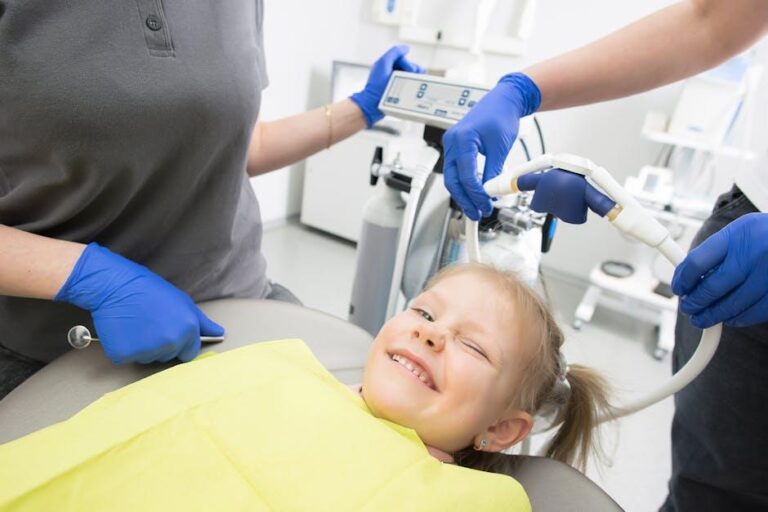1 in 3 Kids Has Dental Problems, Poll Finds – U.S. News & World Report
Recent findings from a U.S. News & World Report poll have revealed that dental problems affect approximately 1 in 3 children across the United States. This alarming statistic sheds light on the prevalence of pediatric oral health issues, underscoring the urgent need for awareness, preventive care, and timely treatment among parents and caregivers.
Understanding the Scope of Dental Problems in Children
Dental problems in children range from mild to severe and can include cavities, gum disease, tooth sensitivity, and more. The poll highlights the widespread nature of these conditions, which, if left untreated, can severely impact a child’s overall health, school attendance, and confidence.
Common Types of Dental Issues in Kids
- Tooth Decay (Cavities): The most prevalent chronic childhood disease, caused by plaque buildup and poor oral hygiene habits.
- Gingivitis: Early stages of gum disease causing inflammation and bleeding gums.
- Tooth Sensitivity: Discomfort caused by exposed dentin or enamel erosion.
- Misaligned Teeth: Can lead to bite issues and increased risk of decay or injury.
Key Factors Contributing to Pediatric Dental Problems
The poll analysis indicates several contributing factors that increase the risk of dental issues in kids, including lifestyle habits, access to dental care, and socioeconomic conditions.
| Contributing Factor | Description |
|---|---|
| Poor Oral Hygiene | Inconsistent brushing and flossing routines lead to plaque and tartar buildup. |
| Diet High in Sugar | Frequent consumption of sugary snacks and drinks promotes cavity formation. |
| Lack of Regular Dental Visits | Missed checkups delay early detection and treatment of dental problems. |
| Socioeconomic Barriers | Limited access to dental insurance and care, especially in low-income families. |
| Fluoride Deficiency | Insufficient fluoride exposure reduces natural cavity protection. |
Impact of Dental Problems on Children’s Well-being
Dental problems in children do not only affect their mouths—they can impact their entire well-being. Untreated oral health issues can lead to:
- Severe Pain and Discomfort: Leading to difficulty eating, sleeping, and concentrating.
- School Absenteeism: Children may miss school due to dental pain or necessary treatments.
- Speech and Developmental Challenges: Problems such as misaligned teeth can affect speech clarity.
- Low Self-esteem: Visible dental issues often shy children away from social interactions.
Practical Tips for Parents to Prevent Dental Problems in Kids
Prevention is the best strategy when it comes to childhood dental health. Parents and caregivers can take simple, effective steps to protect their children’s smiles:
- Establish Regular Brushing and Flossing: Encourage brushing twice daily with fluoride toothpaste and flossing once daily.
- Limit Sugary Foods and Drinks: Reduce the intake of candies, sodas, and juices rich in sugar.
- Schedule Routine Dental Checkups: Pediatric dental visits every six months aid early problem detection.
- Use Fluoride Products: Consult your dentist about fluoride varnishes or supplements tailored to your child’s needs.
- Encourage Healthy Eating Habits: Promote fruits, vegetables, and dairy products that strengthen teeth.
Additional Support
If your child exhibits symptoms such as persistent toothache, bleeding gums, or visible decay, seek professional dental care promptly. Early intervention can prevent serious complications.
Case Study: The Smith Family’s Journey to Better Oral Health
The Smith family from Ohio discovered their 8-year-old daughter, Emma, had multiple cavities after a delayed dental visit due to busy schedules and financial concerns. Upon consulting their pediatric dentist, they received a clear treatment plan emphasizing consistent oral care and dietary changes.
- Initial Problem: Several untreated cavities and mild gingivitis.
- Intervention: Professional cleaning, cavity fillings, fluoride treatments, and oral hygiene education.
- Outcome: Emma’s oral health improved significantly within months, reducing pain and boosting her confidence.
This example underscores the importance of vigilance and access to dental care for children.
First-hand Experience: Tips from a Pediatric Dentist
Dr. Laura Chen, a leading pediatric dentist, shares her insights:
“Parents play the most crucial role in establishing good oral habits early. Remember, even baby teeth matter—they lay the foundation for permanent teeth. Make brushing fun by using colorful toothbrushes and singing brushing songs. Also, encourage children to drink water instead of sugary beverages, and never skip their dental checkups even if no pain is present.”
Summary Table: Common Dental Problems & Preventive Actions
| Dental Problem | Symptoms | Recommended Prevention |
|---|---|---|
| Cavities | Toothache, visible holes | Brush with fluoride toothpaste, reduce sugar intake |
| Gingivitis | Red, swollen, bleeding gums | Brush and floss daily, regular dental cleanings |
| Tooth Sensitivity | Pain when eating hot/cold foods | Use sensitive toothpaste, avoid acidic drinks |
| Misaligned Teeth | Crowding, bite issues | Orthodontic evaluation, early dental visits |
Conclusion
The statistic that 1 in 3 kids experiences dental problems is a call to action for parents, educators, and healthcare providers alike. Prioritizing children’s oral health through consistent hygiene, healthy diets, and routine dental visits can drastically reduce these issues. By fostering good oral care habits early on, we can ensure brighter, healthier smiles for the next generation.
Remember: Healthy teeth are the foundation to a confident smile and overall wellness. Stay informed, stay proactive, and help your child beat dental problems before they start!


